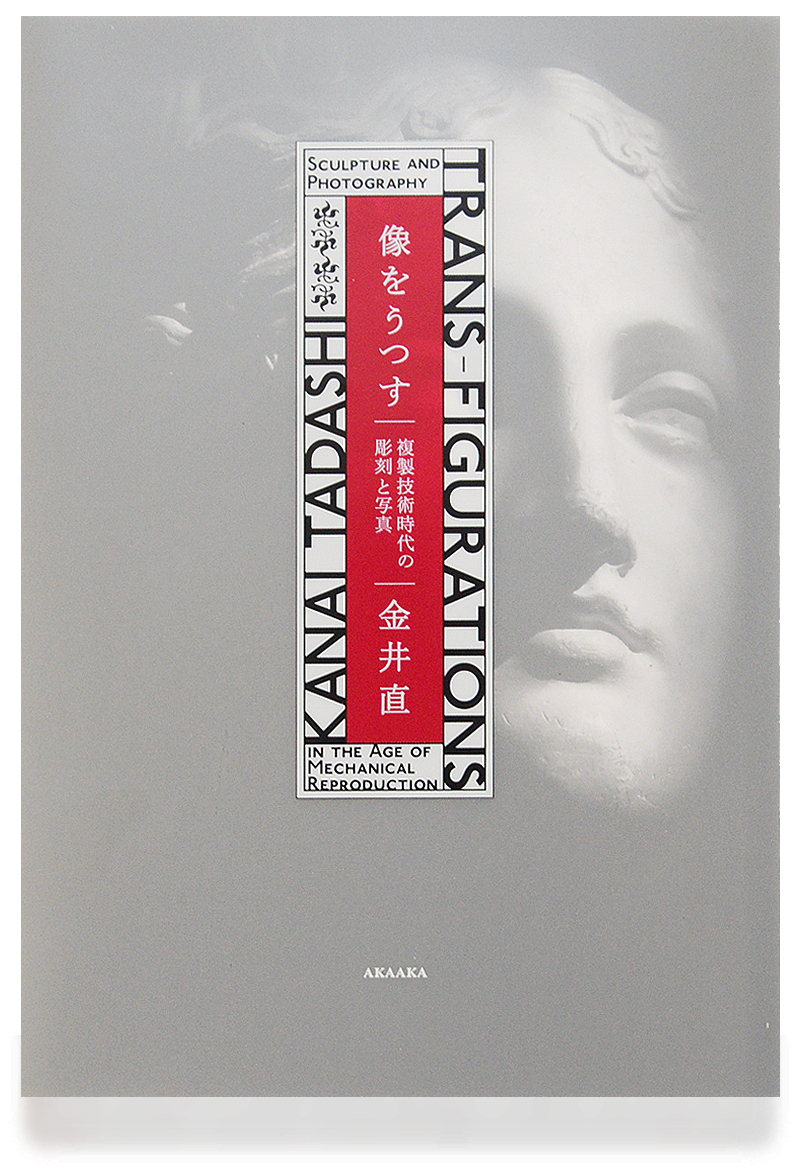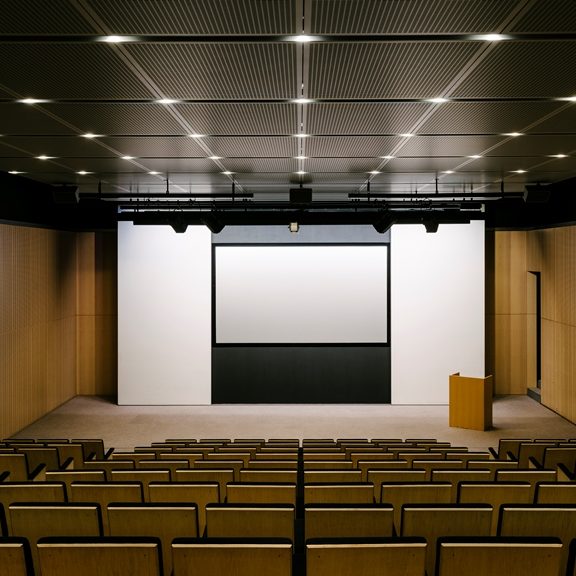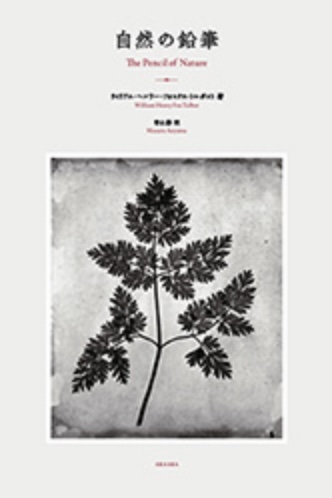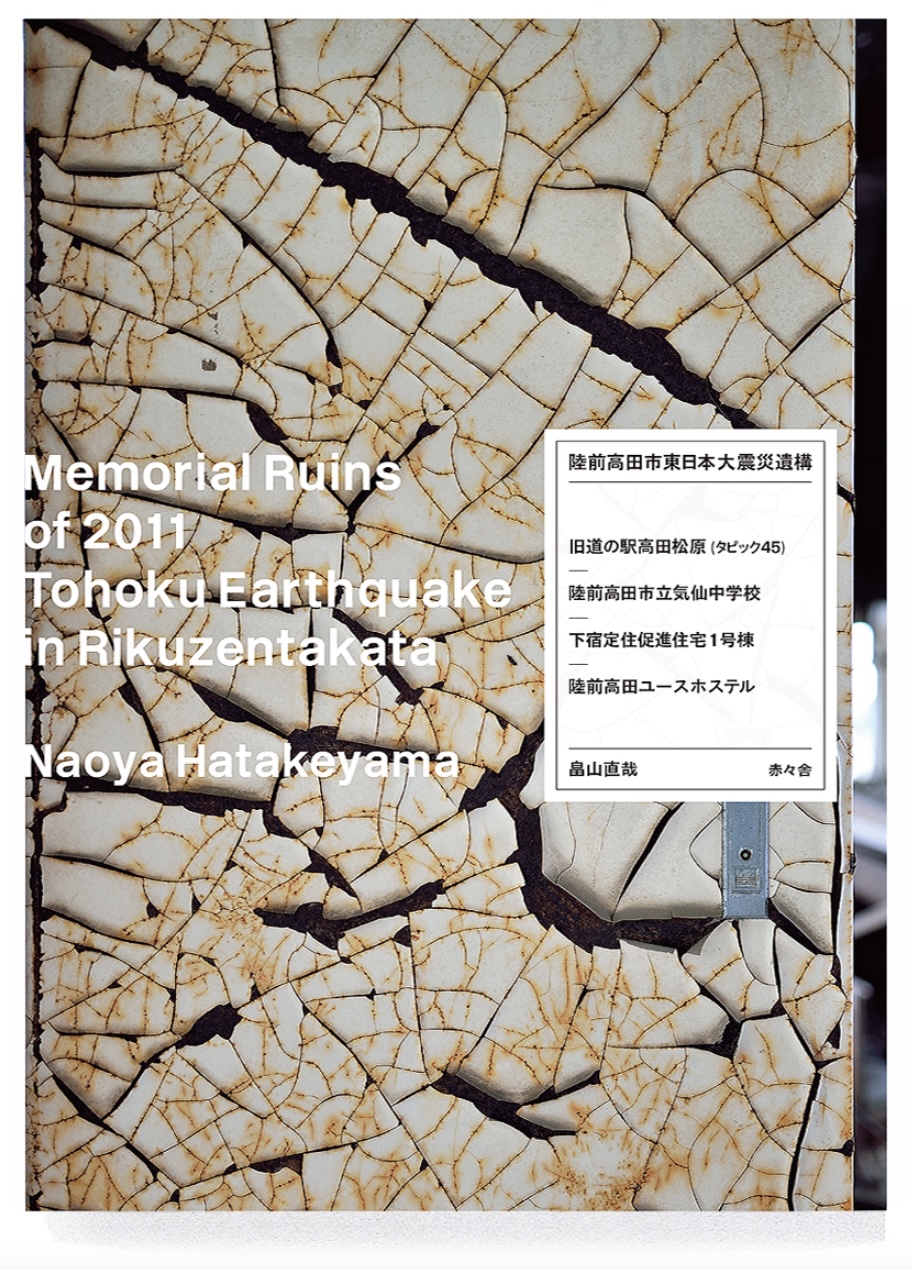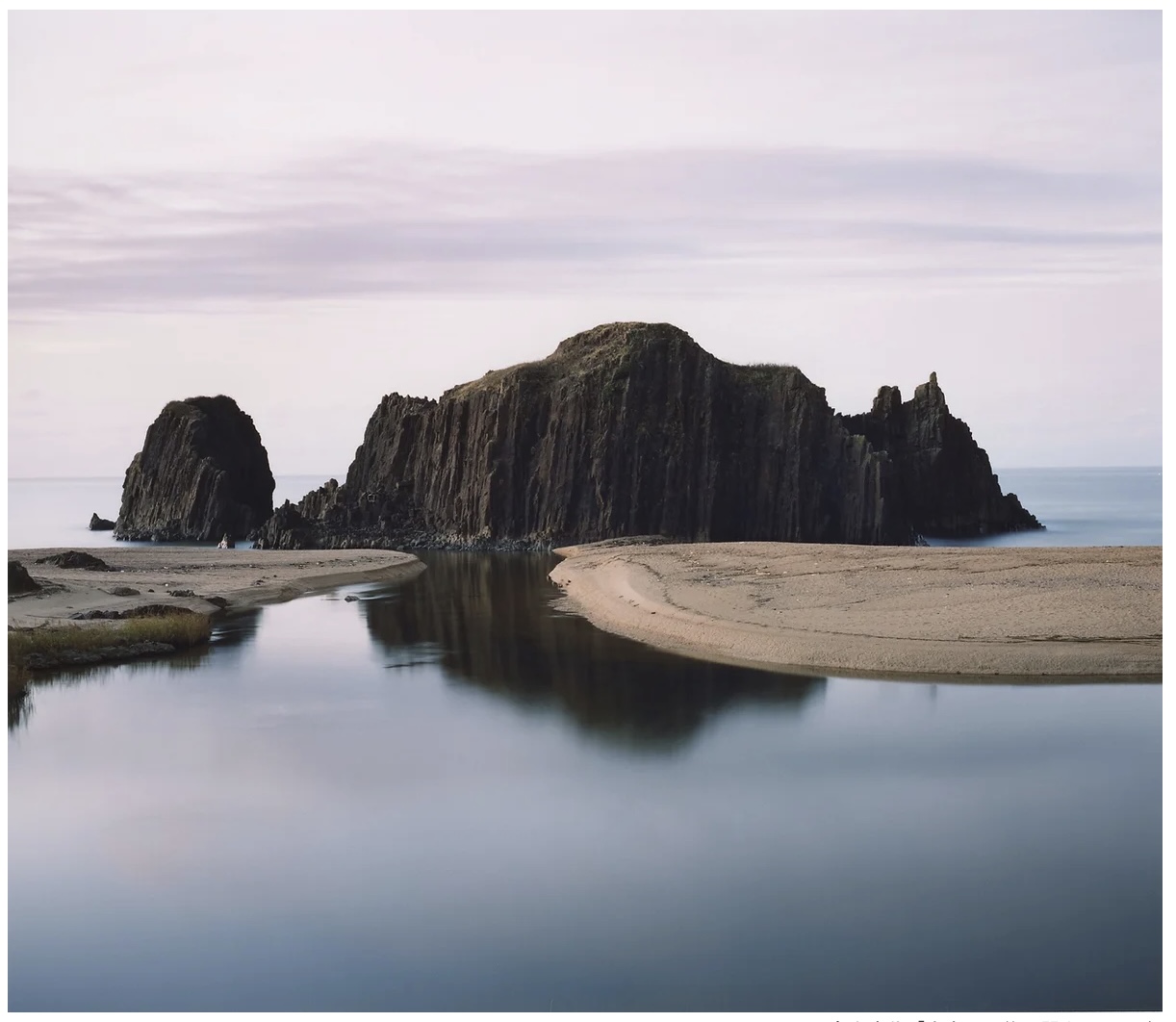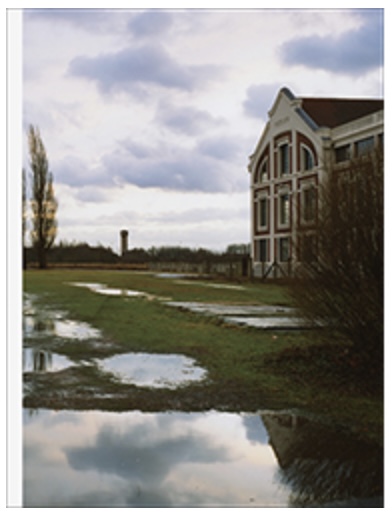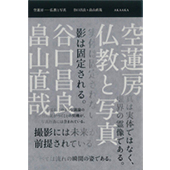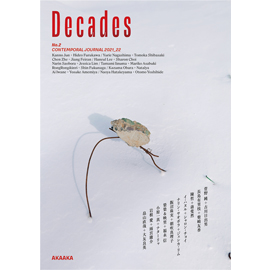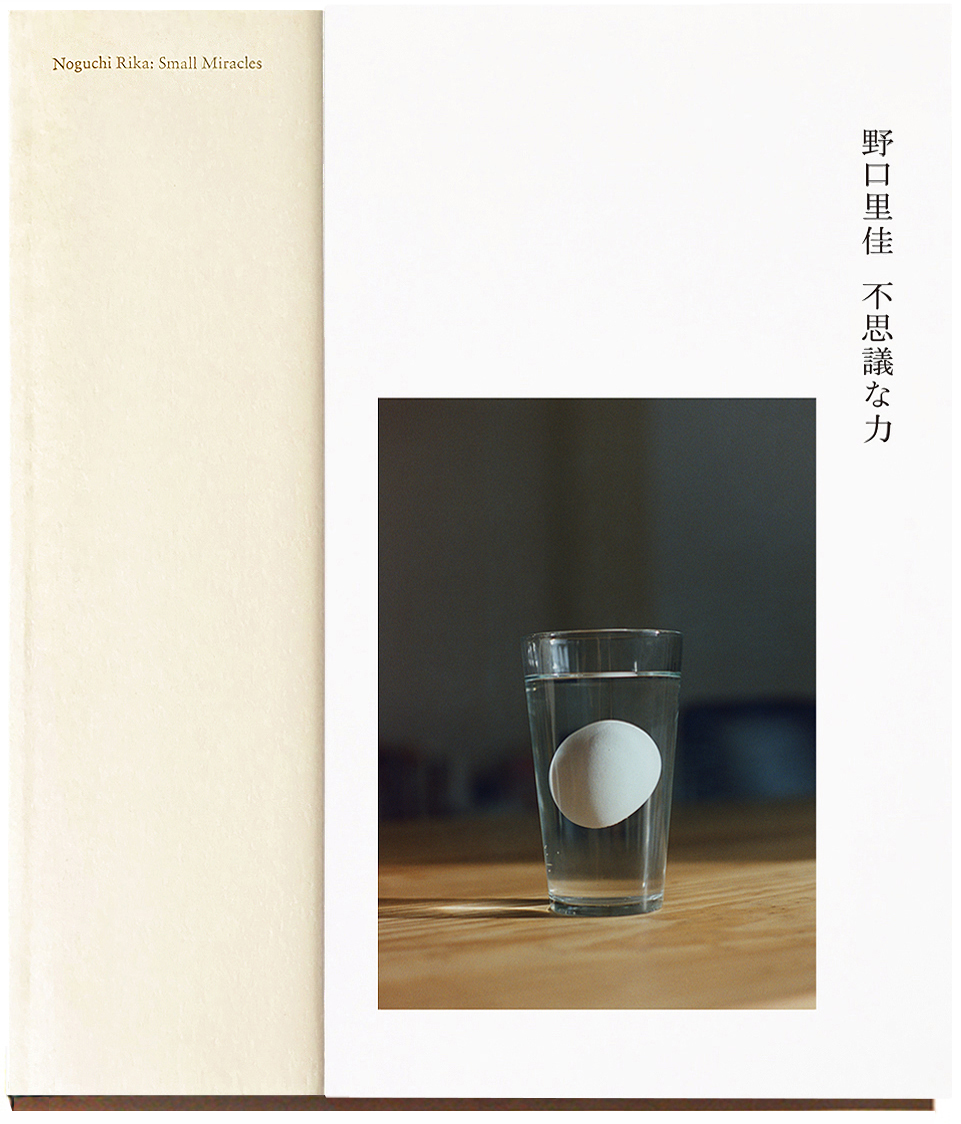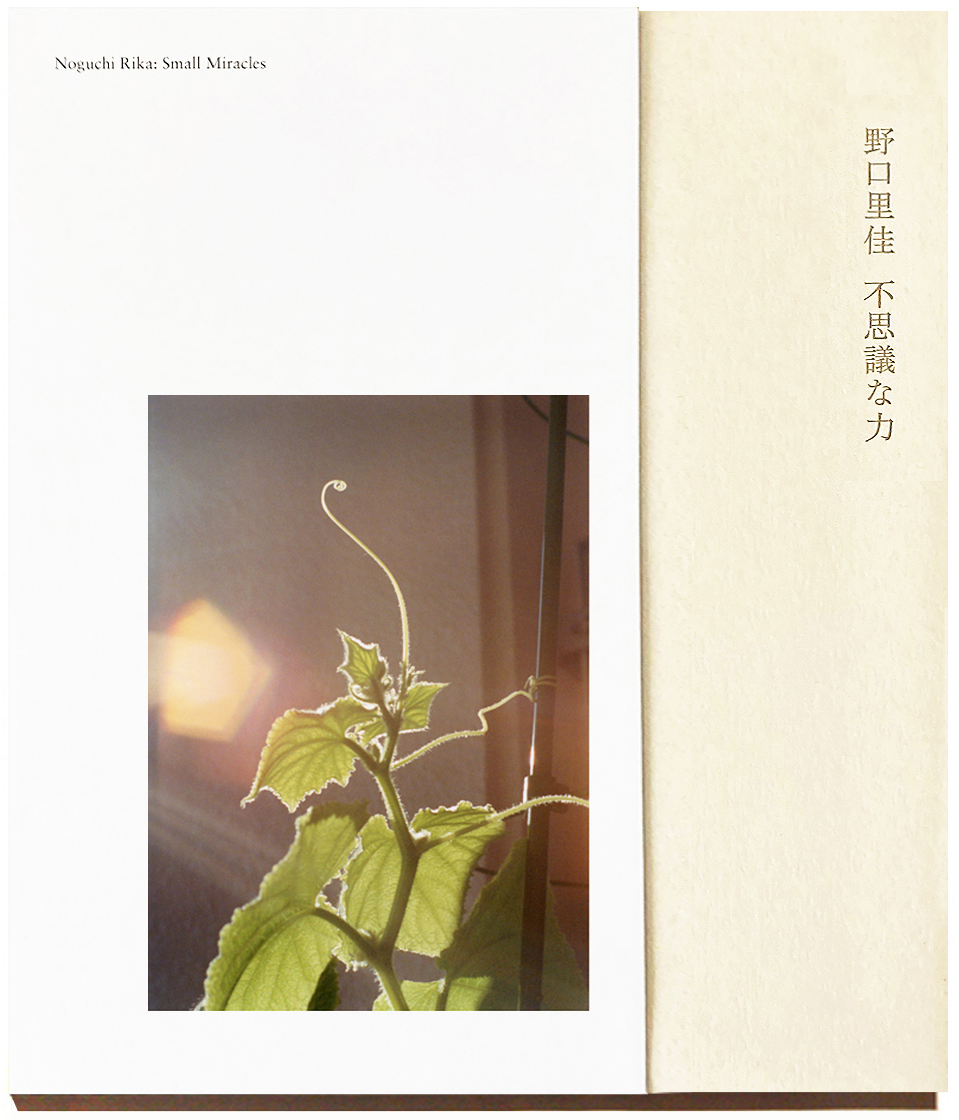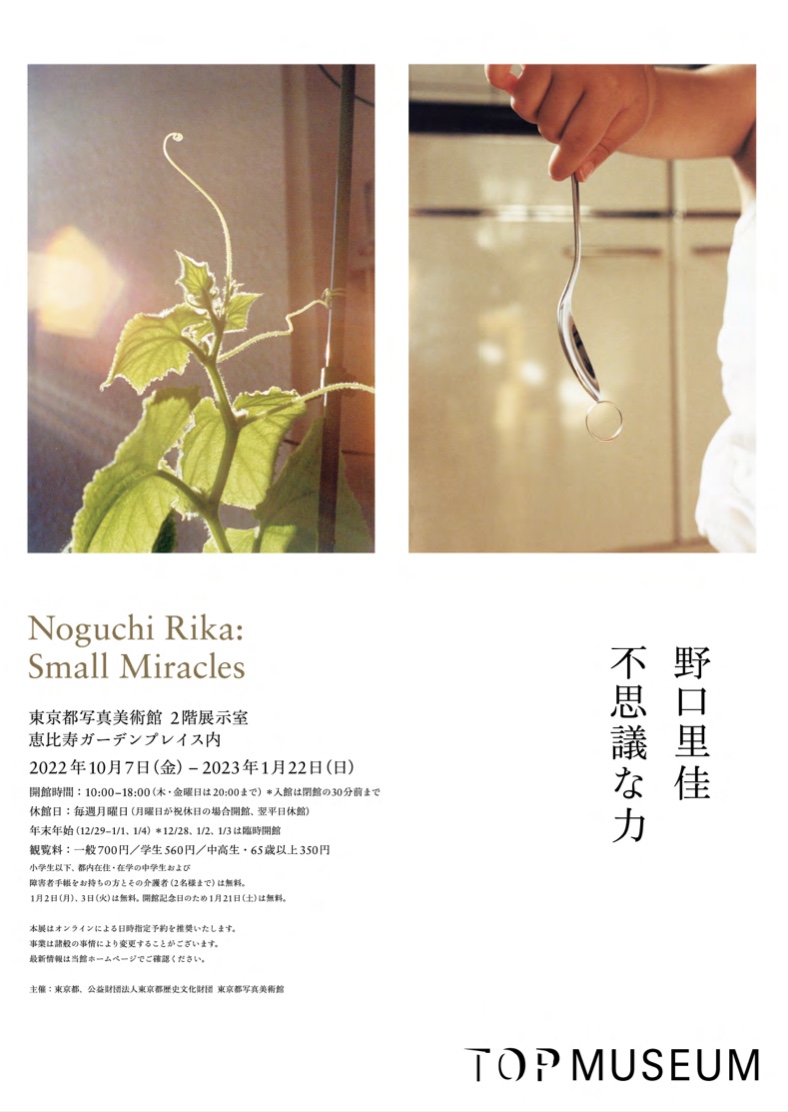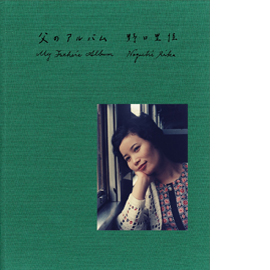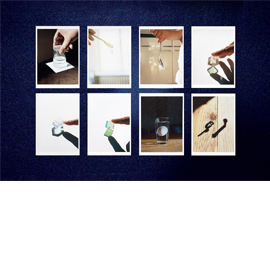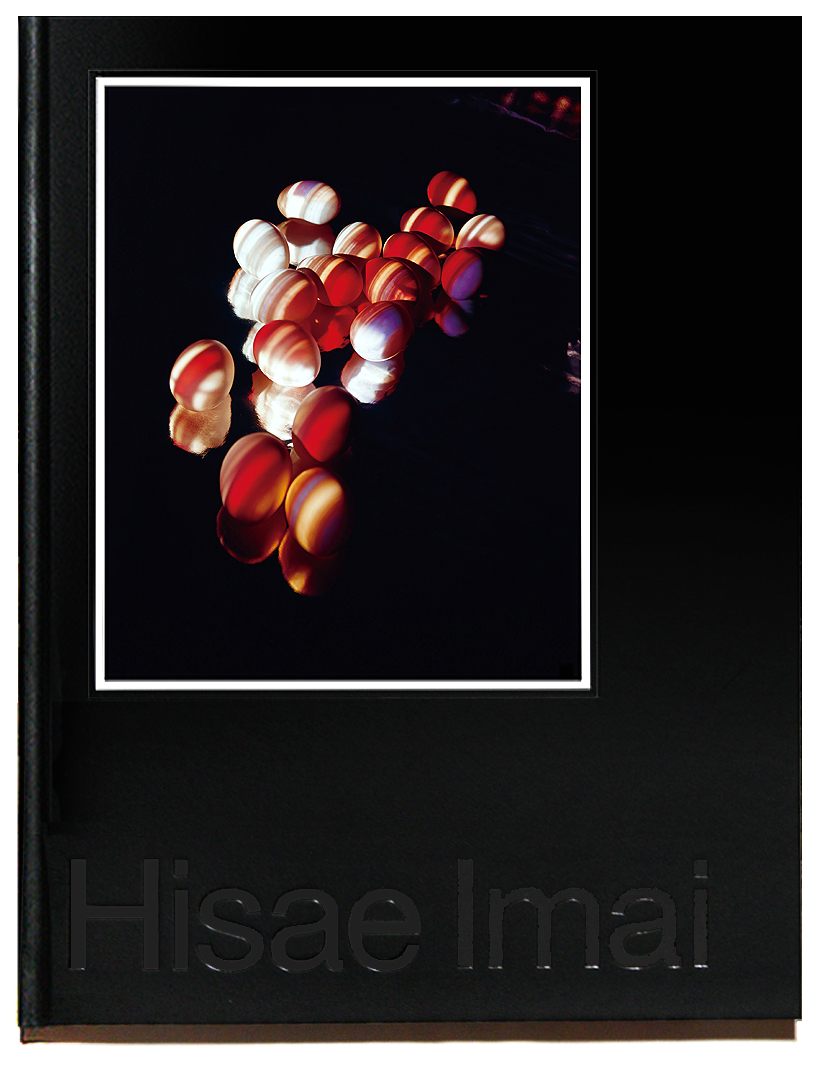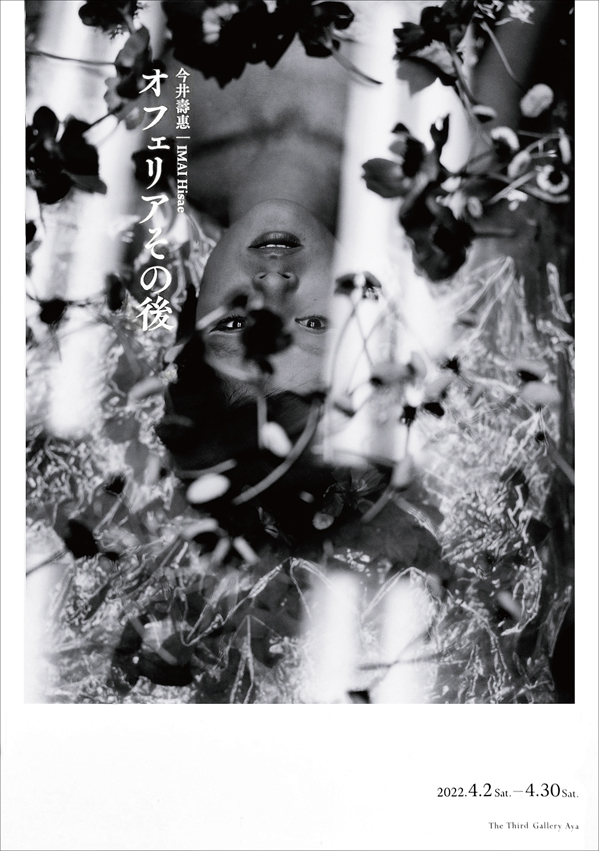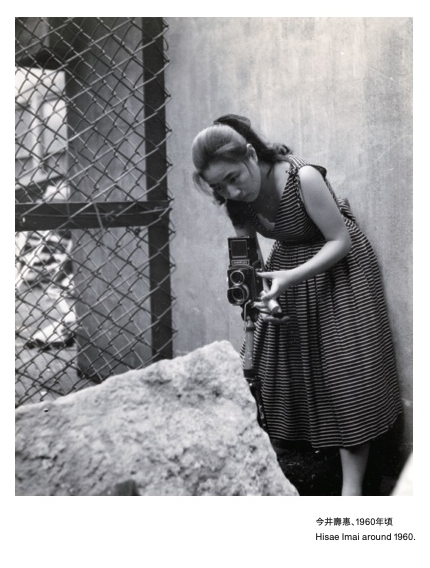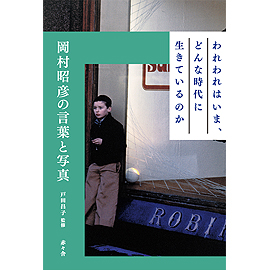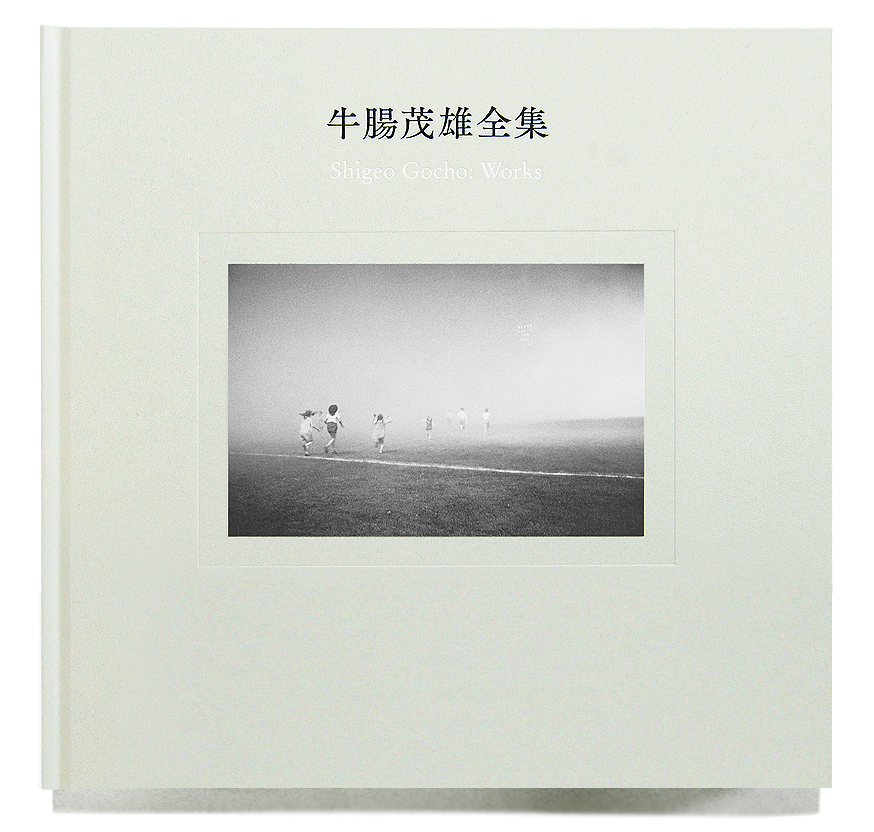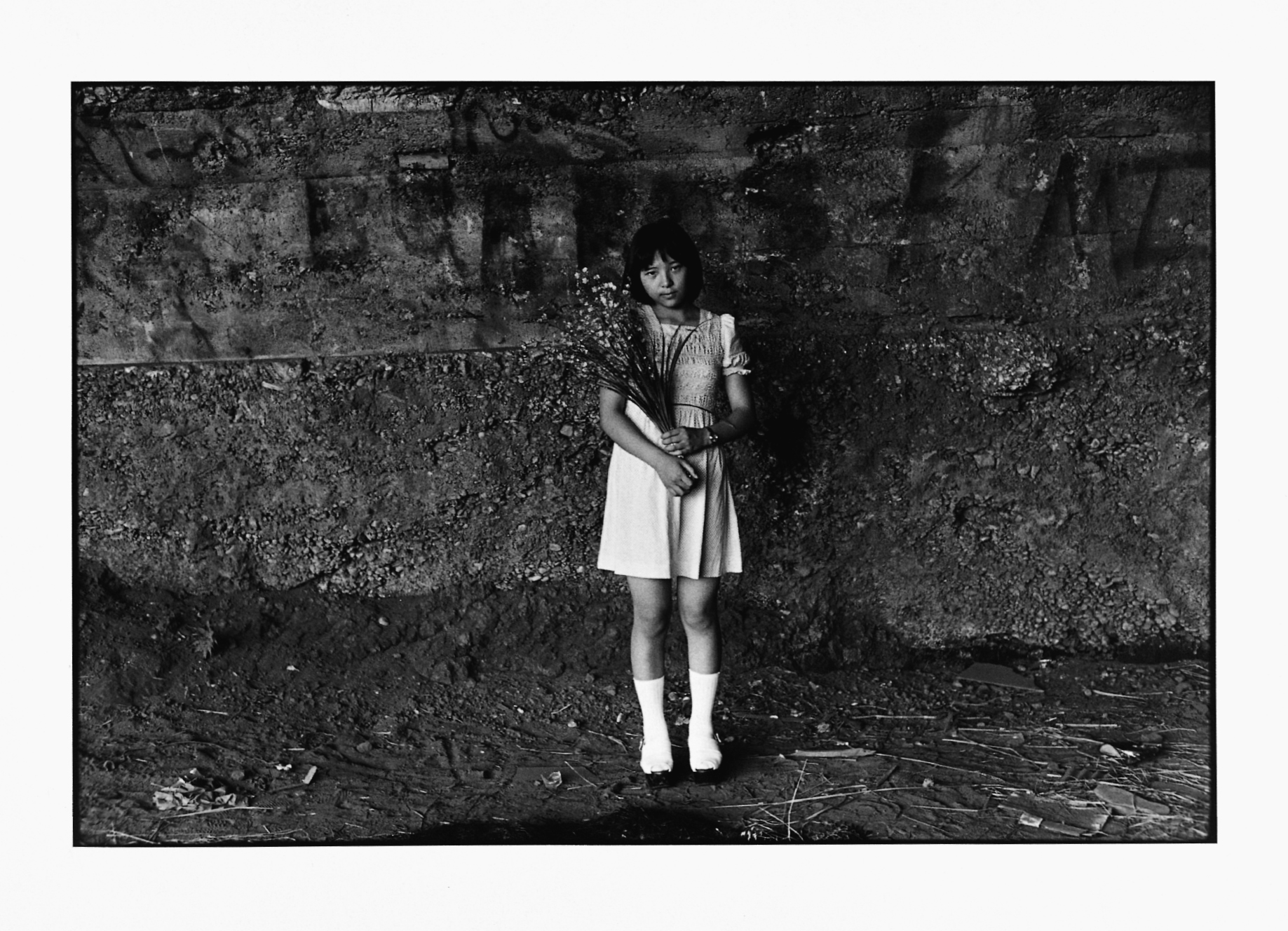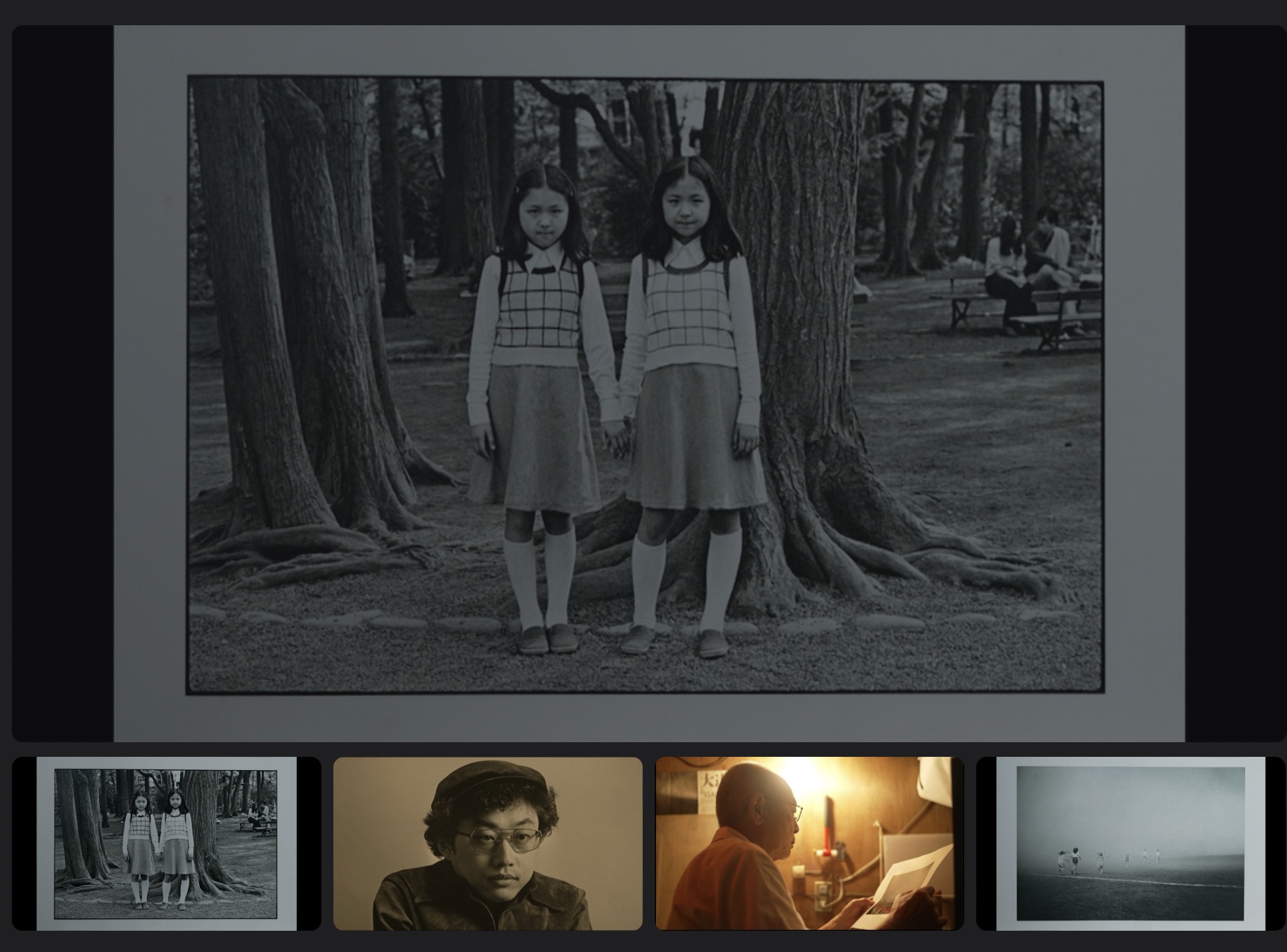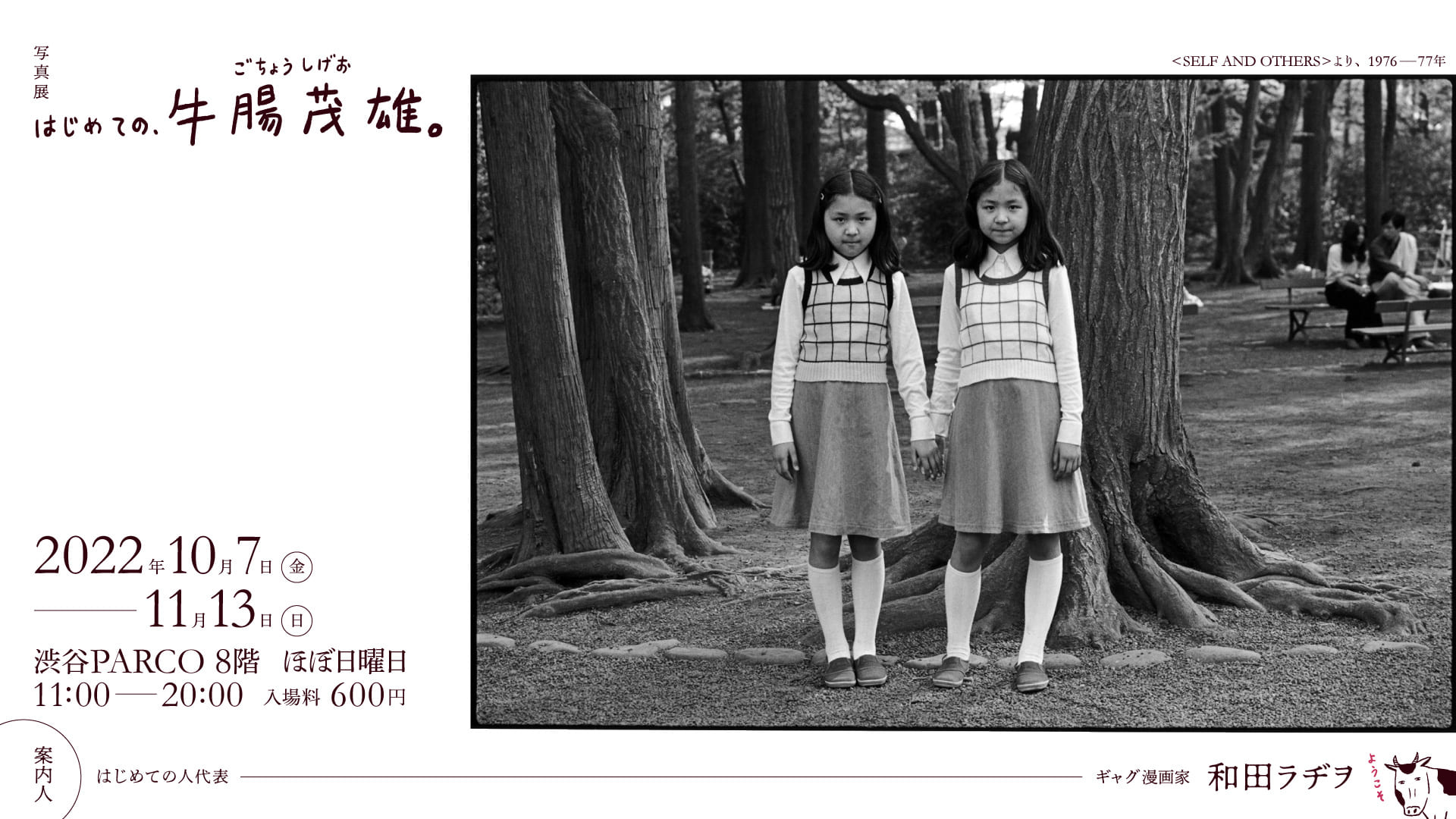Shigeo Gocho: Works
Gocho was born in 1946 in Kamo-shi, Niigata Prefecture. After graduating from high school, he went on to Kuwasawa Design School in Tokyo where he encountered the photograph, the tool that was to be his means of artistic expression for his entire life. Gocho lived in Japan from the period of rapid economic growth until just before the onset of the bubble economy.
In relating Gocho's life, I must inevitably mention the physical handicap that was the cause of his premature death from heart failure in 1983. When he was 3 years old, he was diagnosed with caries of the thoracic vertebrae and the attending physician expressed doubt that he would live to the age of 20. For Gocho, it must have required a certain amount of determination to move to Tokyo alone and pursue photography in light of the physical effort required to take and develop photographs.
Because of this, Gocho must have been constantly aware of the time he had left. For about 16 of the 36 years of his life, he lived with vigor and enthusiasm side-by-side with the artistic medium of photography, all the while dealing with his physical condition. He left a legacy of three photograph collections and one book of artwork along with contact prints, notebooks, and memo books that were the source of the works.
A photographer who died prematurely but lived life with courage and determination in spite of his handicap--when this history is brought to the foreground, the language used to relate his life tends to take on a dramatic color. And it is true that Gocho's early life and physical handicap did have an influence on his art, so it would probably be difficult to completely hold back such a reaction. [...]
Having said that, how does one go about relating a story you are compelled to tell? I would like to approach Gocho's life by taking a detailed look back on the legacy of works he left us and the times in which he lived.
Days 1971
His first self-published photobook Days was a collaboration with Masao Sekiguchi, a friend from Kuwasawa Design School. The book, a compilation of black and white photos taken around the city, is in a format of 24 photos by Sekiguchi in the first half and 24 photos by Gocho in the second half.
At the time of publication, Days was critiqued as being too commonplace and lacking in individuality, a comforting representation by young people of a "peaceful Japan." Considered against the "political season" around 1970, their photographs certainly appeared at first glance to be unconnected to the upheaval of that time. [...]
But is his photographic expression really devoid of political awareness? Isn't the approach of watching a scene play out from a removed position without entering into it an attempt in and of itself to uncover something in what would ordinarily be overlooked and in which the eye of thoughtful observation is concealed?
Let's take a more detailed look at Gocho's photographs. They always contain people or animals, but in most cases the subjects are not looking toward the camera. One distinguishing feature is the preponderance of subjects connected with Western cultures such as Caucasian people, dogs of foreign breed, and flags of other countries.
It was a time when Japan had come out the other side of post-war American occupation and was right in the middle of a period of rapid economic growth. Although the last half of the 1960s saw student protest movements break out all over the country, it was a phenomenon that came to be known as "rebellion in the midst of prosperity" in view of Japan's steady progress toward becoming an economic power. When considered against this background, don't the photographs of seemingly Caucasian families walking in the city and eating outdoors, to the extent that they are bringing their children to Japan and enjoying life here, indicate that Japanese and Western societies had moved closer together?[...]
These photographs suggest the imbalanced nature of Japan's relationship with Western cultures. [...]
The photographs in Days in which "each other's eyes don't meet" were undoubtedly chosen deliberately to express the social conditions of that time.[...]
Nevertheless, at the stage of compiling Days, mention of these kinds of current events and "straightforward" photographs of an American army base and a World Fair motif were carefully removed. Mention of social conditions were woven into Days quite inconspicuously and in a form difficult to recognize.
The approach of intentionally choosing an obscure mode of presentation may have been entirely natural for someone born in 1946 who belonged to the postwar generation. For the generation born after the war, the penetration of American culture eventually had been rendered invisible as being a matter of course and was just part of everyday life, unlike for those people whose adolescence was spent during the period of war and occupation. [...]
Self and Others 1977
S&O takes as its theme relationships between self and others, which is apparent from the same title of a book by Scottish psychiatrist R. D. Laing and the words of Erving Goffman quoted on the last page of the photobook.
There seems to be no agent more effective than another person in bringing a world for oneself alive or, by a glance, a gesture, or a remark, shrivelling up the reality in which one is lodged.1
S&O largely departs from Days in that Gocho photographs people he knows, approaches them in a straightforward way, and most of the subjects are looking directly at the camera. All of the subjects in the 60 black-and-white photographs are people--Gocho's family, friends, children he encounters around town, former students from the university where he taught, and Gocho himself. Self and Others is first of all a study of the position of the photographer in relation to his subject.
But the eye of the photographer was not focused only on the people beyond his camera. Gocho himself is also one of the subjects in a self-portrait. By including a photograph observing himself as the "other," the portrayal of self and others in S&O becomes even more convoluted. [...]
The picture on the wall behind Gocho in "Self-portrait" is probably an inkblot (decalcomania) done by him. Gocho was fascinated with these images, which are also used for psychological analysis. Publication of S&O came after an exhibition of inkblots by Gocho and before he published an art book of inkblots.
The inkblot in "Self-portrait" seems to pose a question to readers who have turned from "viewer" to "viewed" as to what else they have discovered from the photobook. The question is not only asking what readers perceive in the images confronting them, as the Rorschach test does, but also the meaning of the reactions they have to what they see.
Familiar Street Scenes 1981
In 1978, Gocho was awarded the Newcomer's Award at the 28th Photographic Society of Japan Awards for his S&O photobook and photography exhibit. He was also selected as one of the candidates for the 3rd Kimura Ihei Memorial Photography Award. [...]
In Familiar Street Scenes, which was to be his third and last self-published photobook (below, Street Scenes), resembles Gocho's first photobook Days in that the subjects are people coming and going around town who are unknown to him, but there are numerous differences. For example, in contrast to the black and white photographs of Days, all of the 47 photographs of Street Scenes were taken with color positive film. Compared to the distant angles from which many of the photographs in Days were taken, Gocho makes free use of several types of lenses--telephoto, zoom, and wide-angle--and experiments with various far and close up distances from the subject. He is also aggressive in the use of no-finder shots, low angles, and blurring.[...]
It was a time for Japanese society right before the arrival of the bubble economy when a colorful consumer culture permeated the cities. [...] There is a sense of sorrow in the photograph of a young girl in dressy mourning clothes and a pregnant woman on her right that makes you wonder whether it was Gocho's intention to suggest that even life and death had become a part of the consumer society.[...]
By their outward manner, it appears as if they are looking not at an actual human being but at someone on the other side of a TV screen. There actually may have been interaction between the performers and the spectators, but it isn't shown in any of the photographs. That being the case, we can no longer know whether what people are looking at are other people or products seen in the city or on TV. In the photographs in which "eyes are meeting but don't actually meet" Gocho cleverly captures this aspect of city life.
Gocho, walking around the city with camera in hand, is not free from these conditions. I feel that the last sentence in his preface, "And I take photographs from the edge of people's comings and goings," speaks not only of the physical position of the photographer but also of a boundary from which he photographs that implies questions as to whether his existence comes into the awareness of others, of whether it allows for his existence as an individual.
In the same preface, he talks about "inexplicable shadows of human existence." In the "shadows" that cross the photographer's field of vision, there may also be a feeling of discomfort from human beings being equated with something other than human beings. Or could they be the silent moans emitted from people uncomfortable with change but unable to resist it? By using color positive film to create a contrast of light and shadow, Gocho is attempting to create a sense of discomfort in viewers that reminds them of their "shadows."
Childhood 1983
The last work Gocho presented was Childhood in the June 1983 issue of Nippon Camera. The subjects are children. If Children, some of the photographs are included in Days, in the June 1968 issue of Camera Mainichi was essentially his debut work, then at the end of his life he returns once again to his subject of first choice.[...]
In a letter to the editor of Nippon Camera, Gocho reveals that he had started thinking about creating another work, The Time of Old Age (below, Old Age), to follow Childhood.
The "time" of childhood can be described as "life" beginning to blossom and the possibility of encounters with bright "moments." The "time" of old age faces the inevitability of death that comes sooner or later for everyone. When this is recognized for oneself, the magnificence of life is restored... Commonplace scenes of elderly people in the city. ...people who are nearing their last years. The inobtrusive inclusion of one photograph of someone near the point of death--this is the content I am envisioning. I don't want the mood to be too dark, and I also want to avoid photographs of funerals and cemeteries that are easily intimidating. Just as we say the "time" fruit is ripe, it's my belief that the "time" of old age is never only dark and sad.
We see from Gocho's notebooks written at the time, that in S&O he was also attempting to approach elements of "death." In the end, photographs dealing with "death" were not included, but you could say there was something close to it in the photograph of a young girl with eyes closed sprawled out on a bed in a stark white room, or the last photograph in S&O.
The last photograph in S&O is also on the cover of the photobook. It was taken at a firework display for an Independence Day celebration held at the U.S. Army's Camp Zama or perhaps on the day of the Bon Festival Dance. Looking only at the photograph, the location seems to be intentionally obscured. In an expanse of fog, children are running away and other children are running toward them. One may imagine that just before direct contact with "others" the child's ego or self has not yet coalesced and is still in a state of chaos. Gocho's placement of this image on the photobook cover indicates both looking forward to and being uneasy about the journey of encountering "others" about to begin.
And the children who have crossed over the white line seem to be living in a world entirely separate from this one. Undoubtedly, if we go back to the stage before the self is formed in encounters with others, we eventually arrive at the world on the other side before "life" appears.
What is impressive is that Gocho's portrayal of this is never tragic. On the contrary, what is there before everything begins is chaos filled with possibilities. This vision of life and death would surely have been carried over to his concept for Old Age that was to follow.[...]
However, there is somehow a strange quality of maturity in the children in Childhood. Could one reason be due to associating the relatively high number of closeups of the upper half of the body with the photographs of parents in S&O? In the figures of children in "childhood" is caught a glimpse of them in "old age." Childhood suggests that two times exist within a human being--the time of "childhood" and the time of "old age," that is to say, youth and old age, life and death exist alongside each other similar to "self and other" and illuminate each other. Although Old Age was not realized due to Gocho's death, elements of it were already contained in Childhood.[...]
Looking back over Gocho's works, they feel to be a trial-and-error attempt to perceive the dynamics of borders or "edges" that exist between two things. For example, the "edges" of contact between two cultures or two eras. The "edge" that arises from two people encountering each other, the "edges" confronted by young people living in the city. The photographic works Gocho left show that the experience of various "edges" can be discovered in sudden random facial expressions and gestures.
Re-evaluation of Gocho's works began at the end of the 1980s and still continues today. Re-evaluation did not end with a one-time look certainly due to Gocho's personal story but also to the fact that the allusions to various social phenomena and "edges" portrayed in his works deeply resonate with people at the core of their being.
Extracted from the text
"Living on the Edge─ The Works and Times of Shigeo Gocho"
Yukiko Tomiyama
Related Program
NHK Eテレ 日曜美術館
「友よ 写真よ 写真家 牛腸茂雄との日々」
初回放送:2022年10月30日(日)9:00〜9:45 再放送:2022年11月6日(日)20:00〜20:45
36歳でこの世を去った写真家・牛腸茂雄(ごちょう・しげお)。さりげないポートレートが見る者をとらえる不思議な魅力を、友人の写真家の目線を通してひも解いていく。
|
|
|
Related Exhibiton
「写真展 はじめての、牛腸茂雄。」
会期:2022年10月7日(金)〜2022年11月13日(日)
時間:11:00〜20:00
会場:ほぼ日曜日(渋谷PARCO8階) 入場料:600円(税込)
|
|
|
Artist Information
牛腸茂雄 1946年11月2日、新潟県南蒲原郡加茂町(現・加茂市)で金物屋を営む家に次男として生まれる。3歳で胸椎カリエスを患いほぼ1年間を寝たきりで送る。 10代から数々の美術展、ポスター展などに入選。 1965年、新潟県立三条実業高等学校を卒業後、桑沢デザイン研究所リビングデザイン科入学、その後、リビングデザイン研究科写真専攻に進む。 1968年、同校卒業。デザインの仕事と並行して写真を撮り続ける。 1977年、『SELF AND OTHERS』(白亜館)を自費出版。1978年、本写真集と展覧会により日本写真協会賞新人賞受賞。 1983年、体調不良のため実家に戻り静養を続けるが、6月2日、心不全のため死去。享年36歳。 2004年には回顧展「牛腸茂雄 1946-1983」(新潟市立美術館、山形美術館、三鷹市民ギャラリー)が開催され、2000年には佐藤真監督によるドキュメンタリー映画「SELF AND OTHERS」が製作され大きな反響を呼ぶ。2013年、『こども』(白水社)、新装版『見慣れた街の中で』(山羊舍)が相次いで刊行された。
Shigeo Gocho Gocho Shigeo was born November 2nd, 1946, as the second son of a hardware merchant in the district of Kamo (now the City of Kamo) of Minamikanbara County in Niigata prefecture. After falling ill with Pott's disease (vertebral tuberculosis) at the age of 3, he spends nearly a whole year in bed. In his teens, several of his works get selected for various art and poster exhibitions. In 1965, after graduating from the Niigata Prefectural Sanjo Business High School, Gocho enters the Living Design Department of Kuwasawa Design School where he finally proceeds to the Photography Department and graduates in 1968. He continues to take photographs while working as designer. 1977, he self-publishes a collection of images under the title 'SELF AND OTHERS' (Hakuakan, Nagoya). In 1978 he wins the Newcomer Award of the Photographic Society of Japan for this collection and its subsequent exhibition. In 1983 he returns home due to his worsened physical condition, but despite continuous efforts to improve his condition, dies on June 2 of heart failure. He was 36 years old. A retrospective exhibition under the title 'Shigeo Gocho 1946-1983' was held 2004 at The Niigata City Museum of Art, The Yamagata Museum of Art and Mitaka Civic Art Gallery. In 2000, director Sato Masato released his documentary on Gocho, which he named after Gocho's 1977 photo-collection 'SELF AND OTHERS' and received wide acclaim. 2013 saw the publication of his photo-collection 'Children' (Hakusuisha, Tokyo) and a newly designed edition of the 'Familiar Street Scenes' (Yagisha, Tokyo).
|
|
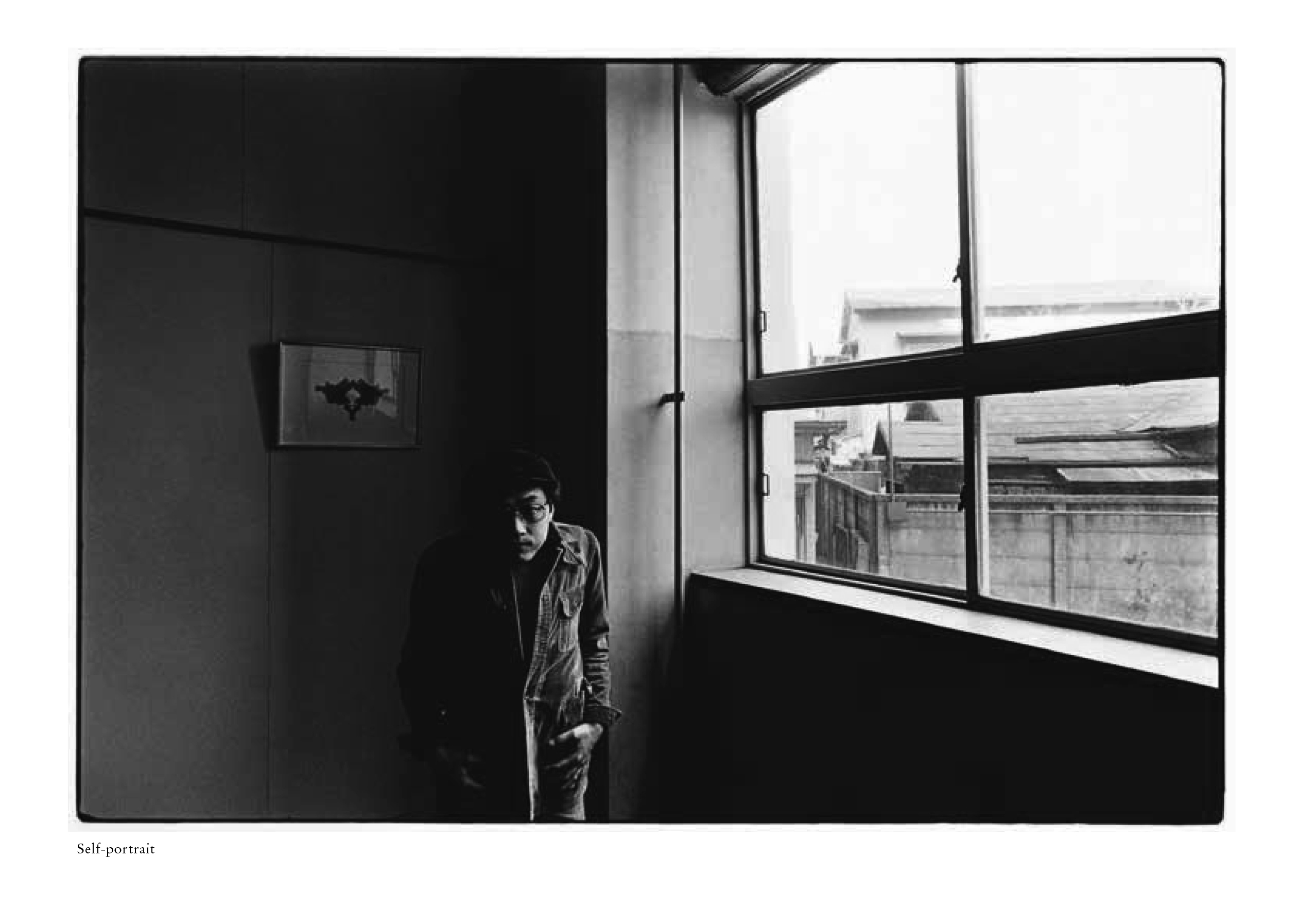
|
